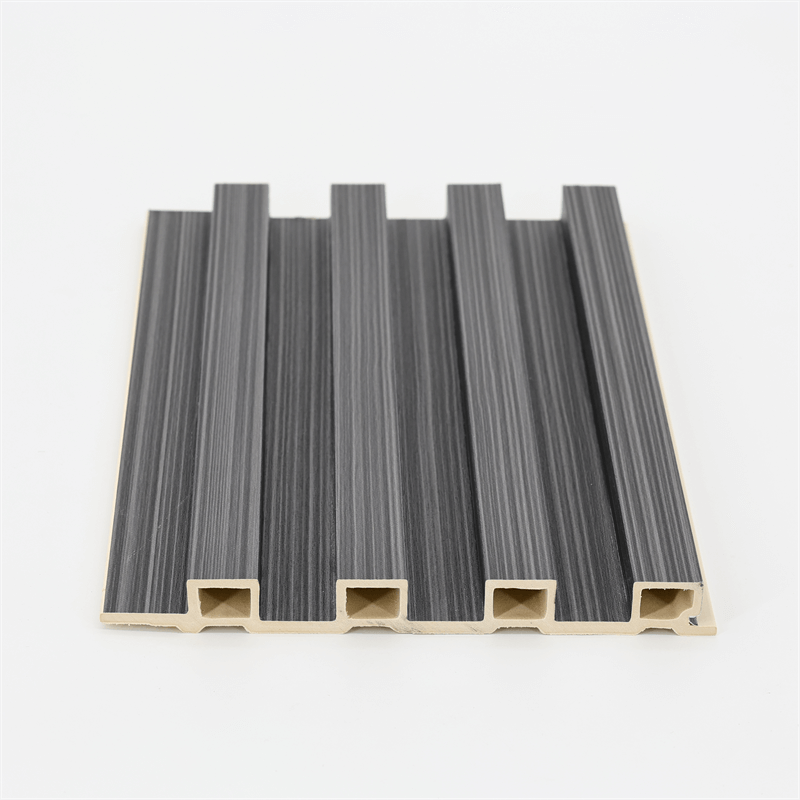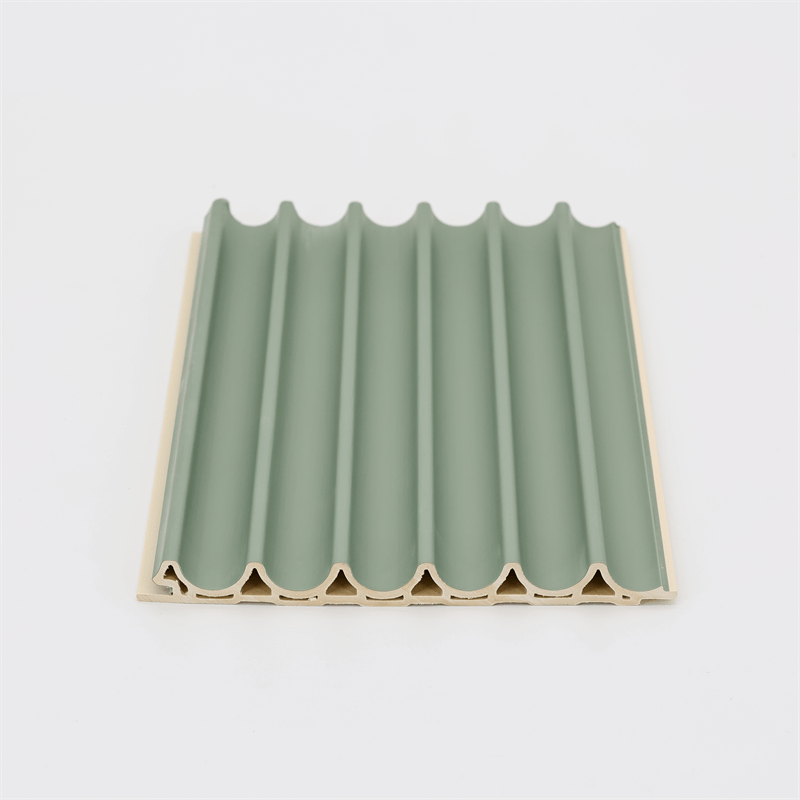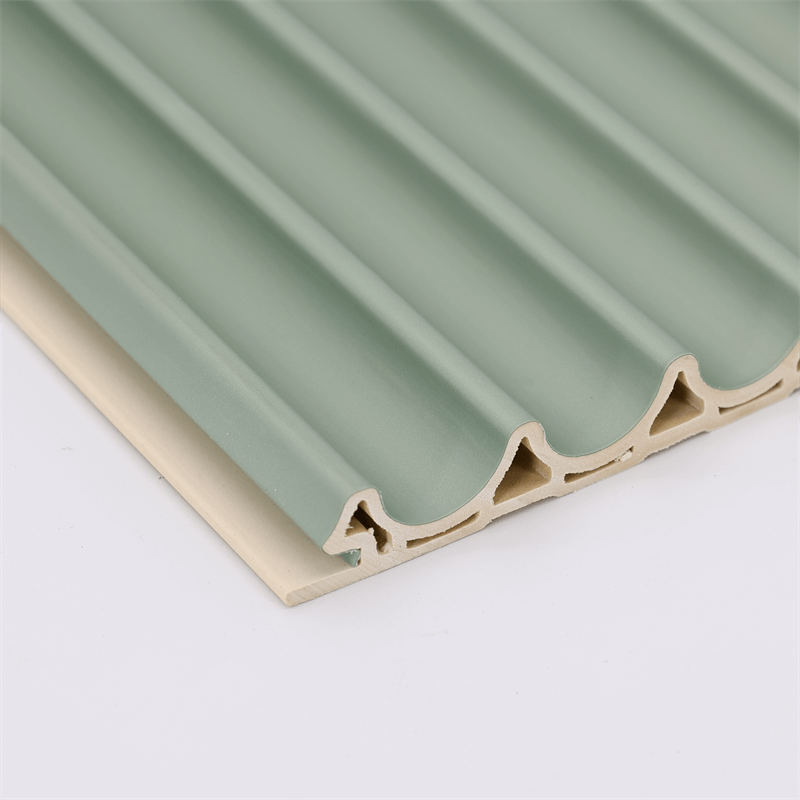In an era of increasing environmental consciousness, sustainable construction practices and materials are gaining prominence.
Wood-Plastic Composite (WPC) wall panels offer several environmental benefits that make them a preferred choice for eco-friendly construction.
This essay explores the environmental advantages of WPC wall panels, focusing on their use of recycled materials, reduced carbon footprint, conservation of natural resources, and potential for recyclability.

I. Use of Recycled Materials:
A. Recycled Wood Fibers: WPC wall panels are primarily composed of recycled wood fibers obtained from post-industrial and post-consumer sources.
By utilizing these wood fibers, WPC panels reduce the demand for virgin wood, minimizing the need for logging and deforestation.
This aspect contributes to the conservation of forests and preserves natural habitats.
B. Recycled Plastics: In addition to recycled wood fibers, WPC panels incorporate recycled plastic polymers, such as high-density polyethylene (HDPE) or polypropylene (PP).
By utilizing post-consumer plastics, WPC panels divert waste from landfills and reduce the consumption of new plastic materials.
This recycling process reduces the environmental impact associated with plastic production and disposal.
II. Reduced Carbon Footprint:
A. Lower Energy Consumption: The manufacturing process of WPC wall panels typically involves lower energy consumption compared to traditional wall materials.
The combination of recycled wood fibers and plastic polymers requires less energy-intensive processing, resulting in reduced greenhouse gas emissions and a lower carbon footprint.
This aspect contributes to the overall sustainability of WPC panels.
B. Greenhouse Gas Emissions Reduction: WPC panels have the potential to contribute to the reduction of greenhouse gas emissions.
By utilizing recycled materials and reducing the need for virgin wood and new plastic production, WPC panels help mitigate the environmental impact associated with traditional wall materials.
This aspect aligns with global efforts to combat climate change and promote sustainable development.

III. Conservation of Natural Resources:
A. Reduced Dependence on Virgin Wood: The use of recycled wood fibers in WPC wall panels reduces the demand for virgin wood, preserving valuable natural resources.
This conservation effort helps protect forests, which play a crucial role in carbon sequestration, biodiversity preservation, and ecosystem stability.
By opting for WPC panels, builders and homeowners contribute to the sustainable management of forests and the preservation of their ecological functions.
B. Water Conservation: WPC wall panels require less water for manufacturing compared to traditional wood paneling.
The reduced water consumption in the production process contributes to water conservation, especially in regions where water scarcity is a concern.
This aspect aligns with sustainable practices that aim to optimize resource usage and minimize environmental impact.
IV. Potential for Recyclability:
A. End-of-Life Recycling: At the end of their life cycle, WPC wall panels have the potential to be recycled.
The separation of wood fibers and plastic polymers can allow for the reclamation and reuse of these materials.
Recycling WPC panels reduces waste generation and contributes to a circular economy approach, where materials are continually reused or recycled, minimizing the demand for new resources.
B. Extended Product Lifespan: The durability of WPC wall panels contributes to their extended lifespan, reducing the need for frequent replacements.
By using a long-lasting material, builders and homeowners can minimize waste generation and extend the life of their structures.
This aspect supports sustainable construction practices that aim to optimize resource utilization and reduce the environmental impact of the built environment.
Wood-Plastic Composite (WPC) wall panels offer significant environmental benefits, making them a sustainable choice for construction projects.
The use of recycled wood fibers and plastic polymers reduces the demand for virgin materials, conserving natural resources and minimizing deforestation.
The reduced energy consumption and greenhouse gas emissions associated with WPC panel manufacturing contribute to lower carbon footprints.

Additionally, the potential for recyclability and extended product lifespan further supports the sustainability of WPC panels.
By embracing WPC wall panels, builders, architects, and homeowners can contribute to environmental preservation, promote resource conservation, and advance sustainable construction practices.
In conclusion, the environmental benefits of WPC wall panels make them a compelling choice for sustainable construction.
By utilizing recycled materials, such as wood fibers and plastic polymers, WPC panels reduce the demand for virgin resources, mitigating deforestation and the consumption of new plastics.
The manufacturing process of WPC panels requires lower energy consumption, resulting in reduced carbon emissions and a smaller ecological footprint.
Furthermore, the conservation of natural resources, such as forests and water, is promoted through the use of recycled materials and the reduced water requirements in production.
The potential for recyclability at the end of their lifespan further enhances the sustainability of WPC panels, contributing to the principles of a circular economy and waste reduction.
By incorporating WPC wall panels into construction projects, builders and homeowners can actively participate in environmental preservation, demonstrating a commitment to sustainable practices.
The utilization of recycled materials and the reduced carbon footprint align with global efforts to combat climate change and reduce the ecological impact of the built environment.
Furthermore, the conservation of natural resources ensures the long-term viability of ecosystems and promotes responsible resource management.
As the construction industry continues to prioritize sustainability, WPC wall panels offer an eco-friendly alternative to traditional wall materials.
By harnessing the environmental benefits of WPC panels, we can create built environments that are not only aesthetically pleasing but also environmentally responsible.
With their reduced impact on natural resources, lower carbon emissions, and potential for recyclability, WPC wall panels exemplify the fusion of sustainable practices and innovative design.
By choosing WPC wall panels, we can build a greener and more sustainable future.